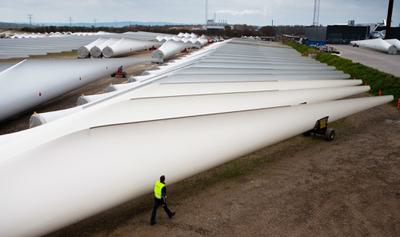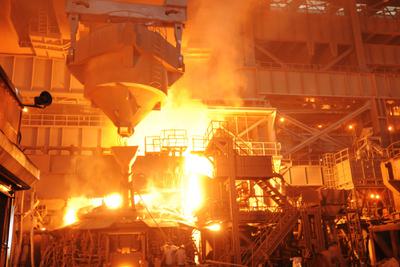The need for a realistic blueprint to wean our economies off carbon emissions has never been more urgent.
The lack of much incentive for deep decarbonization explains why global emissions have increased by nearly two-thirds since 1990, when the United Nations General Assembly formally launched talks that led to the Framework Convention on Climate Change. Emissions are now rising at about 1 to 2 percent annually, even though a new UN study shows they must tumble nearly 8 percent per year to be consistent with holding warming to 1.5 degrees C. No major economy has ever cut emissions of warming gases that quickly; it’s not practical to make such cuts globally on the time frame of industrial and agricultural systems that usually don’t change quickly. The planet will blow through the 1.5 degrees C goal and through 2 degrees C as well. Even with a big effort, we may be on track for 3 degrees C or more — levels of warming that scientists say will have ruinous consequences. Yet even as the most ambitious global goals are slipping away, the need for a realistic blueprint to steadily wean our economies off carbon emissions has never been more urgent.
For Bundy, strategic thinking led to diplomacy — arms control agreements with precise commitments that the superpowers, already motivated to cap the volcano, could put into practice. For climate change, strategic thinking runs the opposite direction. Climate change is a global problem, but making global progress requires that progressive countries and companies lead the way by demonstrating practical, scalable ways to achieve deep decarbonization. Only then can diplomacy and global agreements follow by codifying and directing progress once key countries already know what they are willing and able to do.
While the Paris Agreement is an encouraging framework, it seems unlikely that today’s diplomacy will be the handmaiden of strategic thinking for climate change. Nearly 200 countries are involved, each with different interests. Agreements require consensus, which creates a strong incentive for holdouts. The gridlock most recently on display at UN climate talks in Madrid — where essentially nothing was agreed — is just the latest evidence that global diplomacy and global agreements will operate too slowly and too cautiously to address the climate crisis. Global agreements have a role to play, but they will largely be followers rather than leaders.
Wind turbine blades ready to be shipped from a storage facility in Aalborg, Denmark. Timothy Fadek/Corbis via Getty Images
Making more rapid progress requires changing the facts on the ground — new methods of industrial production and agriculture with radically lower emissions — so that key countries will be willing to do more and powerful groups and companies can mobilize around systemic decarbonization.
In Madrid, a team of us released a new study that offers this new view for accelerating deep decarbonization. Our core argument is that getting serious about decarbonization requires a new approach to industrial policy — one that is organized sector-by-sector and coordinated internationally to create progressively larger markets and stronger incentives for decarbonized industries.
Decarbonization requires a string of technological revolutions in each of the major emitting sectors. We count 10 sectors that matter most, including electricity generation, cars, buildings, shipping, agriculture, aviation, and steel. These 10 sectors account for about 80 percent of world emissions.
Creating technological revolutions will require different actions in different sectors. In agriculture, one of the most promising options would be to reorient crops so they pull even more carbon dioxide out of the atmosphere and store that carbon underground — something that doesn’t happen when a field gets re-plowed every season. Some experiments show how this can be done with existing crops, but the real opportunity lies with crop engineering — breeding plants to store more carbon in their roots and then growing them with no-till methods that leave carbon undisturbed.
In nearly every sector, the world isn’t far along in the technological revolutions needed for decarbonization.
In electricity, much of the action must focus on expanding the use of solar and wind so that costs keep coming down. Lower costs mean that every dollar invested goes farther; total investment has stayed roughly flat, but the installed capacity of wind and solar are soaring. It is vital that government policy also look beyond just renewables — for example, to flexible gas-fired power plants that capture carbon pollution before it is released into the atmosphere, and to advanced nuclear plants with zero emissions. Such plants can help keep grids reliable as they shift to lots of renewable power — operating when the sun isn’t shining and the wind isn’t blowing.
In cars, policies aimed at boosting sales and lowering costs of electric vehicles — such as subsidies that decline as technology improves, as well as investments in charging infrastructure — can play a role, as they already have in China, California, and some European countries. Even more experimentation is needed, however, in realms such as charging, so that EVs become a viable business and move beyond niche applications.
In buildings, it has become clear that there are two very distinct problems. One concerns new buildings — where, for example, advanced heat pump technology can allow for electrification of heating systems. The other, much bigger problem is how to cut emissions from existing buildings, which will account for most emissions from this sector. Here the actions are a blend of technology (e.g., easier to retrofit efficient heating and air conditioning systems) and regulation, since in most countries the big barriers to changing buildings aren’t just cost but also building codes.
A driver charges his electric vehicle at a service station in Hangzhou in China's eastern Zhejiang province. STR/AFP via Getty Images
With the help of the non-profit Energy Transitions Commission, we have outlined the actions needed in every sector. What’s striking is that in nearly every sector the world isn’t far along in the technological revolutions that will be needed for deep decarbonization. In policy circles it is often said that the world has the technology it needs for deep cuts. Our report suggests that message is wrong and misleading. Sure, there’s a lot of technology. But what’s needed for deep decarbonization in the real world is a combination of technology and business models — real companies with an incentive to deploy at scale. On that front, the decarbonization revolution is still at its early stages in most sectors, although there are tangible signs of progress.
Frank Geels, one of the world’s leading experts on technological revolutions, has broken down the process of massive technological change into three major phases — emergence of a new technological system, diffusion into widespread service as the system gains market share and improves performance, and then broad reconfiguration of whole markets around the new system.
New technologies are emerging, which gives cause for optimism over the long haul. But fundamental change tends to happen slowly, which means that between the inertia of today’s existing technological systems, investment commitments to high-emitting infrastructure, and the inertia of the climate system there’s a lot of warming in the pipeline.
The organization of each of the emitting industries is different, as are the political forces that must be managed and the technological opportunities in each sector. This is one reason why economy-wide policies, such as emission trading and carbon taxes, haven’t had much impact on boosting profound innovation. Those policies, when they work at all, encourage companies to adopt known technologies. But what’s needed in most sectors is a more dynamic approach through which policies target the direction of innovation. In California, the northeastern U.S., and Europe some of the proceeds from cap-and-trade programs are now directed to innovation and deployment of new technologies. Many national governments have created strategic innovation programs, as well, and one of the most important things to emerge from the Paris climate conference in 2015 was Mission Innovation, a program to boost and coordinate these kinds of investments.
The penetration of low-carbon technologies into markets follows a familiar S-shaped curve, with the emergence of a new technological system, its diffusion into widespread use, and then reconfiguration of whole markets around the new system. The decarbonization of 10 key economic sectors, shown here, is still in the early phases of this transition. Courtesy of Frank Geels
Today, only a subset of political jurisdictions — mainly in Europe and parts of the United States, and in a few other countries — have demonstrated that they are highly motivated to act. The silver lining in this disturbing fact is that these leaders can get a lot done — if they have the right strategy. Much of what is needed to improve technologies and markets in the initial phase can happen in small groups of countries where incentives for change are strongest.
Take steel, for example, a polluting industry that is the least far along in the decarbonization revolution. Unless the world finds a replacement for steel — which so far, for most applications, seems unlikely — then decarbonization of raw steel production must take place. Cutting emissions requires finding new sources of carbon-free heat; rather than burning natural gas or coal in steel plants, alternatives such as electricity, hydrogen, or carbon-capture technologies must be explored. It also requires methods for chemically reducing molten iron ore into steel — a process that today uses coal and causes emissions. Several alternative methods exist in theory, but all of them seem likely to raise costs a lot — perhaps doubling the price of bulk steel from today’s levels.
Because steel is a globally traded commodity, no company will make this shift on its own. Active industrial policy is required, which means direct subsidies for companies that are testing green steel production methods, as is happening in Sweden, Austria, and a few other countries. Beyond subsidies, government policy can link new supplies of green steel with users who are most willing to pay higher initial costs — including governments, which can create guaranteed markets through their purchasing policies.
The engineering of decarbonized systems may prove relatively easy once enough companies, governments, and consumers focus on the need.
With this industrial policy approach, a new green steel industry is slowly emerging. Initial pilot plants are beginning operations now and over the next few years, and industrial-scale pilot plants are slated for the late 2020s/early 2030s. Those projects are concentrated in the European Union and Japan because governments in those markets have offered reliable industrial policies. The problem is that this rate of innovation and testing is much too slow and indecisive. Governments and companies must test a wider array of green steel techniques and build a larger market faster for green steel.
While the details vary across every sector, the pictures are similar. Leaders need to channel political energy from the growing public concern about climate change into policies aimed at changing the incentives to test and deploy new technologies.
As the process gains steam, the political strategies must shift away from small groups of highly motivated leaders and toward broader diffusion. This kind of shift in policy strategy is most evident in the electric power sector, which is farthest along in the process of decarbonization. Success with renewables has focused governments on the next frontier: integration of renewables while keeping grid power reliable and affordable.
In wind generation and integration, for example, Denmark has become a leader — in part because it sees commercial advantage for Danish turbine makers and mainly because the Danish population is highly committed to action on climate change. Less noticed, but more important, is how Denmark is passing on what it has learned about how to operate an electric grid with variable wind power to China’s grid operators, which face a similar challenge. When tiny Denmark uses more wind, the impact on global emissions is minuscule; when China does, the effect can be enormous.
Channeling a lot more McGeorge Bundy into the strategy of deep decarbonization is long overdue. And with success in creating new facts on the ground, the political and economic strategies must shift — from the leaders to the rest of the planet. The physical engineering of decarbonized industrial and agricultural systems may prove relatively easy once enough companies, governments, and consumers focus on the need. The missing link isn’t engineering capabilities but the strategic approach to creating the incentives and markets required for sparking new technology and businesses.







